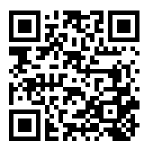 Social economic networks improve the value proposition for both individual and institutional consumers since products and services can be discovered and targeted with greater relevancy.
Social economic networks improve the value proposition for both individual and institutional consumers since products and services can be discovered and targeted with greater relevancy.
Rich attribute information posted publicly by social media users (individual and institutional) can be used by marketers and other interested parties (for example, potential employees) to infer the values, preferences, and interests of others. In response, hyper-personalized advertisements may be presented (Reference: Shih, The Facebook Era, 2009).
Hyper-targeted-marketing, recommendations, and authentic product endorsements from friends are some of the ways that social economic networks have improved commerce relevancy.
The next obvious step would be for vendors to predict demand before it occurs, responding to customer intention.Intention prediction could be accomplished by merging aggregate Facebook or other social media ‘likes’ and comments from high-influence users into purchase intent well before sales transactions. An anticipative demand market could arise.
Traditional economics equations could be further transformed as vendors test large varieties of targeted offerings in cost-effective ways via the internet.
The long-tail of supply and demand could meet in millions of micro-markets, possibly even at the level of individual pricing and individual offerings. Smaller lot sizes means higher margin. There are numerous entrepreneurial opportunities in facilitating product and service generation, production, and distribution at the level of n=1.
















 Email me
Email me Twitter
Twitter MS Futures Group
MS Futures Group Data Visualization Wiki
Data Visualization Wiki Economic Fallacies
Economic Fallacies
